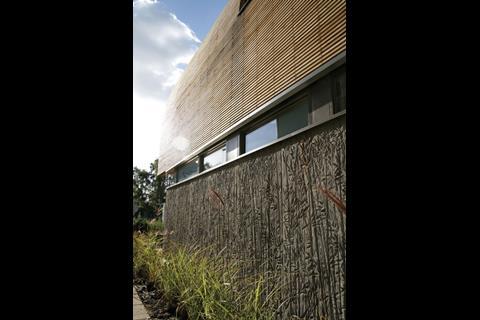Landscaping, so often an afterthought, is actually the magic ingredient for developers aiming for a zero-carbon rating.
As the designers and builders busied themselves with preparations for the low-carbon homes at BRE’s Offsite07, landscape architect Peter Wilder knew there was something wrong.
The partner at Macfarlane Wilder Associates was already working on the land in front of the Kingspan house, but felt this was not sufficient. “I approached BRE and told them the park needed a co-ordinated landscape approach it did not reflect current thinking,” he explains. “They challenged me to come up with a plan.”
The thinking Wilder was referring to is the Code for Sustainable Homes, where landscaping can help a developer score points in an impressive eight out of nine categories: water, materials, surface water run-off, waste, pollution, health and wellbeing, management and ecology. The only category where it is not relevant is reducing energy and carbon emissions.
As a result, landscaping will soon be able to make or break a development’s attempts to earn the coveted zero-carbon status under the code Jaya Skandamoorthy, director of enterprise and innovation at BRE, knew the innovation park was the best place to test new landscaping solutions. “This is the first year we have focused on landscape,” he admits. “We wanted to use the park as a showcase for industry, showing it how to deliver on all the elements of the code.”
How the team did it
Rainwater harvesting Water is one of the key areas where you can make a big difference, says Wilder. At the innovation park, Macfarlane Wilder has specified porous paving from Hanson, which allows rainwater to percolate through to an underground reservoir, where a thermal heat exchange takes place.
The water is then either heated or cooled, according to the season, and pumped back for non-drinking water use in the houses, such as showering or flushing the toilet.
Any rainwater run-off that isn’t absorbed by the paving is collected in a swale, a shallow trough that cuts vertically through the centre of the site.
Once the rainfall has stopped, a vortex flow control system kicks in. This transfers the water to the main sewerage system at a rate of about 2litres/sec, which is the same rate as water run-off on a greenfield site.
Biodiversity and ecology The water draining in and out of the swale encourages a wilder selection of wildlife at the park, says Wilder. “This way we can attract wildlife that like wet or dry conditions,” he explains. The firm has also planted more than 75 new species of native UK plants, mostly at the northern end of the site, which is meant to attract new wildlife to the park and will score points in the code.
Waste At the centre of the site stands a revolutionary new type of rubbish bin, part of an integrated automated waste collection system. “The bin is the surface receptacle but underneath there would be a network of pipes, which suck the rubbish out, automatically segregate it and then pack it off to a central, local recycling plant,” says Skandamoorthy. “This would work great within a community,” he adds.
But the idea came to the innovation park team too late and it wasn’t possible to fit the intricate network of pipes as construction of the homes was well under way.
Innovative products/materials British Sugar supplied the topsoil used across the site as it was a by-product of the sugar-making process. The timber, English Oak, was sourced locally from the Duchy of Cornwall’s estate.
Lesson learned
Both Wilder and Skandamoorthy are adamant that, given another chance, landscaping would have been one of the first things they tackled, not the last.
“It can’t all be done at the last minute,” Wilder says. “It has to be counted as infrastructure and included upfront in the masterplanning stage.” As a result of this last-minute dash, the swale was not built in time for Offsite07, the waste network was not included and the homes are not as well integrated into the landscape as they could have been.
Skandamoorthy also points out that there was an amusing surprise when some of the harvested rainwater turned out an unusual colour.
“The water that ran off the buildings travelled over the timber, which has tannins in it, and turned out to be quite discoloured,” he says.
“It was still usable, but would be understandably off-putting for most people. We need to adapt the system so that the rainwater does not travel directly over the timber.”
The task also threw up some surprising partnerships. “Who’d have thought we’d be working with British Sugar or DuPont [which supplied the pond lining]?” Skandamoorthy laughs. “I’m sure there will be more shocks to come.”
Wilder adds that the industry should note how many new products there are to push forward the sustainability agenda. “We went around and looked at all the newest, most innovative products on the market,” he says. “It is remarkable what is out there already.”
How a housebuilder handles the traditionally “softer” issues such as public space, ecology and biodiversity has never been so crucial. Industry’s current focus on buildings, not landscape, will have to change once the code comes into play and points are needed to attain the higher levels. As Wilder points out: “This is just the beginning.”
Source
RegenerateLive



















No comments yet